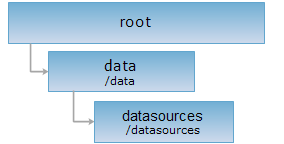<data_uri>/datasources[.<format>]
The datasources resource includes all the datasource resources. Through the datasources resource, we can get all information about the datasources provided by the server.
Supported methods:
Supported output formats: rjson, json, html, xml.

Implement the HTTP request on the following URI, where supermapiserver is the server name, and get the response in rjson format.
http://supermapiserver:8090/iserver/services/data-world/rest/data/datasources.rjson
Gets the list of the datasource information, which includes the datasource name, URI, etc.
None.
Implement the GET request on the datasources resource and get the collection of datasource information. The structure of the information for each datasource is as follows:
| Field | Type | Description |
| datasourceNames | List<String> | The datasource name list. |
| datasourceCount | int | The number of datasources in the datasource collection. |
| childUriList | List<String> | The URI list for datasource access. |
Implement the GET request on the datasources resource and get the response in rjson format, as shown below.
{
"childUriList": ["http://supermapiserver:8090/iserver/services/data-world/rest/data/datasources/name/World"],
"datasourceCount": 1,
"datasourceNames": ["World"]
}
Asks for the response identical to the one that would correspond to a GET request, but without the response body. This is useful for retrieving meta-information written in response headers, without having to transport the entire content. The meta-information includes the media-type, content-encoding, transfer-encoding, content-length, etc.
The HEAD request helps check the existence of the datasources resource and whether it can be accessed by the client. By implementing the HEAD request on the URI, with .<format> appended to the end, we can quickly get to know whether the datasources resource supports the representation in <format> or not.